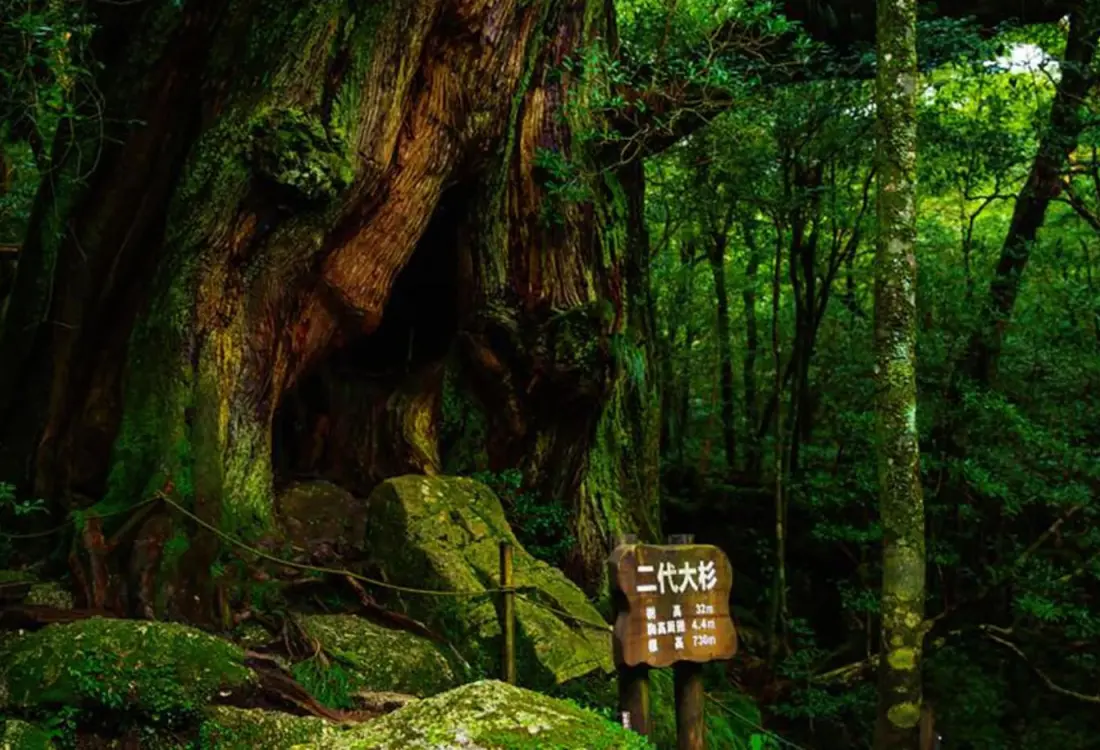
Yakushima
Island of Divinity
There was a massive typhoon smashing its way northward from Okinawa on the morning we boarded our ferry from Ibusuki to Yakushima, and although the ride itself was calm and uneventful, we were surprised to see huge throngs of people waiting to board the return ferry to the mainland. Feeling a pang of apprehension, we could not help but wonder: Were they escaping harm's way? Had we perhaps headed in the wrong direction?
Both of us being natural-born adventurers, however, this fleeting thought was soon replaced by a far more powerful and thrilling one. Here we were, finally realizing our long-anticipated visit to this sacred island: a land home to power spots, ancient cedar trees, and some of the lushest rainforest scenery throughout all of Japan.

The rain had intensified as we collected our rental car and departed Miyanoura Port, so we were delighted to take shelter inside the nearby Café Jane, located just adjacent to the Yakushima Environmental and Cultural Village Center. The café was an extremely inviting-looking space featuring beautiful artwork and furniture handcrafted from local cedar trees, and we happily sat down with our coffees to peruse the pamphlets highlighting the island's numerous offerings for exploration.

Remarking to each other about the nearly comical nature of our timing given the imminent arrival of a major typhoon, the café's extremely friendly barista – who had apparently overheard us – suddenly said: “You are here because the gods have invited you."
It was an unexpected comment—and also one that we went on to hear numerous times throughout our three-day stay on Yakushima: The gods decided who would visit the island, and only those who were meant to reach its shores would succeed in doing so. Indeed, we later learned that we had boarded the last ferry to reach the island, with all subsequent sea and land transport cancelled due to the approaching storm.

The hiking guide we had arranged said that the typhoon would not be reaching its peak for at least another full day, and with our newfound understanding that we were here upon divine invitation, we were now more determined than ever to explore the island. Although we certainly would not be able to make the nine-hour trek to see the venerated several-thousand-year-old Jomon Sugi – said to the be world's oldest cedar tree – given the coming tempest, we eagerly set out for a shorter hike through the island's famed Shiratani Unsuikyo ravine.
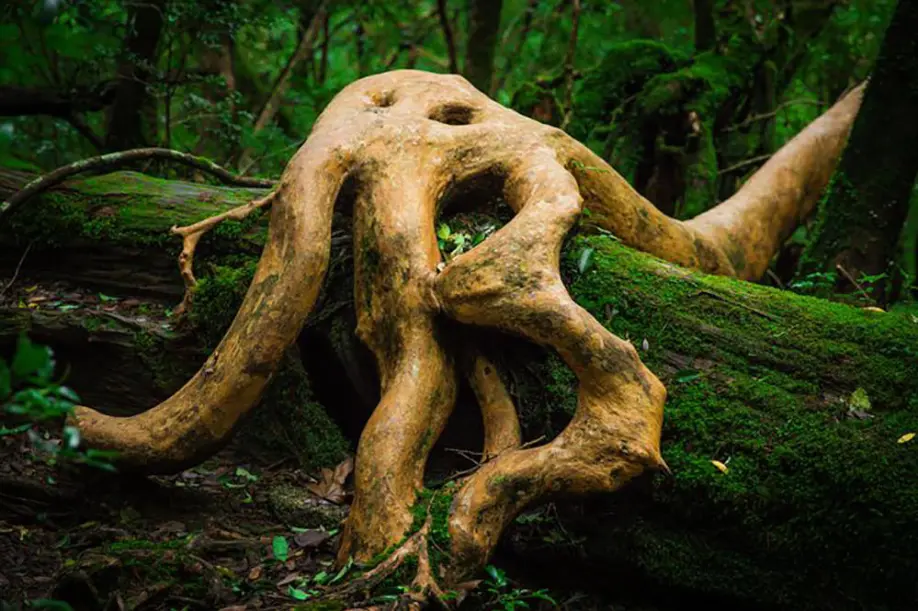
This was the forest said to have inspired Miyazaki Hayao's Princess Mononoke with its otherworldliness, and as we edged our way deeper inside the thicket along the Yayoisugi Cedar Course, it was obvious why. Here were 360 degrees of bizarrely coiled tree roots, tender sprigs of moss that were equally as fascinating when viewed from close up or afar, and easily the densest, lushest greenery I have ever laid eyes on in my life.

Our guide, Ohki-san, told us that he found Yakushima‘s shinryoku (fresh spring green) to be the best in all of Japan, and as we continued wending our way through the valley, he shared one intriguing fact after another about the island.
We learned that local taxes had historically been paid in yakusugi (the local name for cedar trees at least one thousand years old), and that many of the island's trees were felled during and just after World War II in order to produce fuel – particularly with the arrival of the chainsaw during the 1950s. By the 1960s, he said, much of the island's forest had been laid bare – leading to the subsequent rise of the environmental movement.
Ohki-san told us that the island had always seem to attract the type of people who were drawn to the island's abundance of primal nature, with the first wave arriving during the 1980s as an offshoot of the hippie movement. Migration peaked again, he said, with the 2011 triple earthquake, tsunami and nuclear disaster, when many people in and near Tohoku sought safer climes along with more natural lifestyles.
Indeed, it was this diversity of ecosystems – with Yakushima an essential microcosm of the entire Japanese archipelago, from the sub-arctic zone of Hokkaido down to tropical Okinawa – that had helped the island earn UNESCO World Heritage Status in 1993.
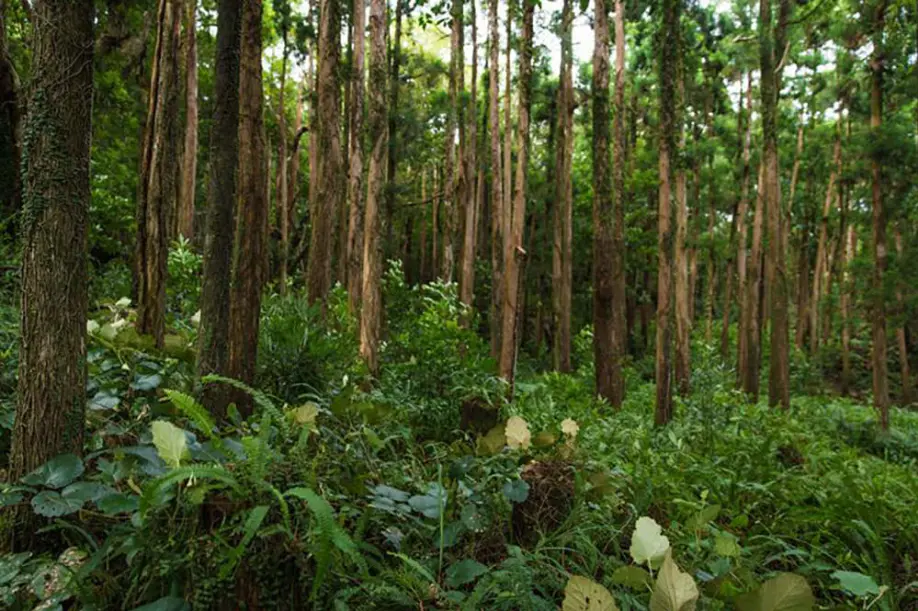
This honor had brought on its own fresh set of challenges with the subsequent influx of tourists, Ohki-san said, but numerous measures were being taken to address the problem of environmental degradation, including the use of hydropower as the island's major electricity source, and an increase in establishments devoted to eco-tourism.
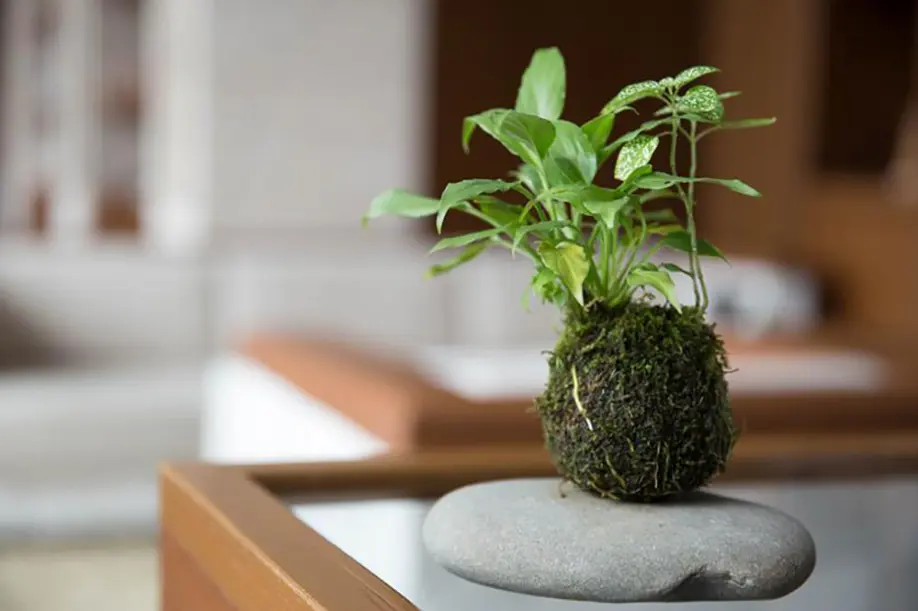
One notable example in this regard is the Sankara Hotel and Spa, whose comprehensive ecological efforts include asking all guests to contribute ¥500 toward local environmental conservation programs; creating original, all-natural amenities from well water and plants/fruits cultivated from around the island; sourcing the restaurants' food from local organic farms, as well as from the onsite herb and vegetable garden; featuring biodegradable garbage bags and all-natural laundry detergent; and utilizing salt from the local Nagata beach area in the hotel's food, toothpaste and spa treatments.

Speaking of the hotel spa, my muscles were not overly sore from our less-than-two-hour hike; but I was intrigued enough by hotel's concept to head directly over for a massage session. Known as Sankara Sana – taken from the Sanskrit to mean, respectively, “bounty from heaven" and “being" – the spa combines elements of Indian Ayurveda together with its own signature treatments, truly showcasing the best of what Yakushima has to offer.

Following welcome tea and oshibori (hot hand towels), the spa offers intake interviews to determine clients' unique constitutions before preparing tailored blends that encompass the island essences of “sui" (rain and water), “you" (sun and fire), and/or “rin" (forest and mountains). Therapists also gather and prepare the various plants and stones used in all spa treatments, which include locally sourced tankan (a type of orange) peel, turmeric and cedar.

One blissful hour later, after being scrubbed, oiled, plied with hot stones, and bathed in an indescribable cloud of fragrances, I emerged from the salon feeling not only well-cared for, but also intrigued to delve deeper into the island's fascinating story. And with the rain just starting to again pick up intensity, reminding me of the wild nature surrounding us, I felt perhaps just a little bit closer to the divine.

Photos by Solveig Boergen
Solveig Boergen is a Tokyo-based photographer originally from Germany who has spent more than three decades living in Asia(Japan, China, Hong Kong, Taiwan, Thailand and Nepal). Her work aims to share human stories, and to show realities that might otherwise remain unseen.Besides travel photography, she specializes in portraits that convey deep emotion, such as newborn babies with their families.

Kimberly Hughes
Kimberly Hughes is a freelance writer, translator, and community organizer who is originally from the desert of the southwestern U.S. and has been based in Tokyo since 2001. She is somewhat addicted to global travel, and also loves cooking, gardening and reading.
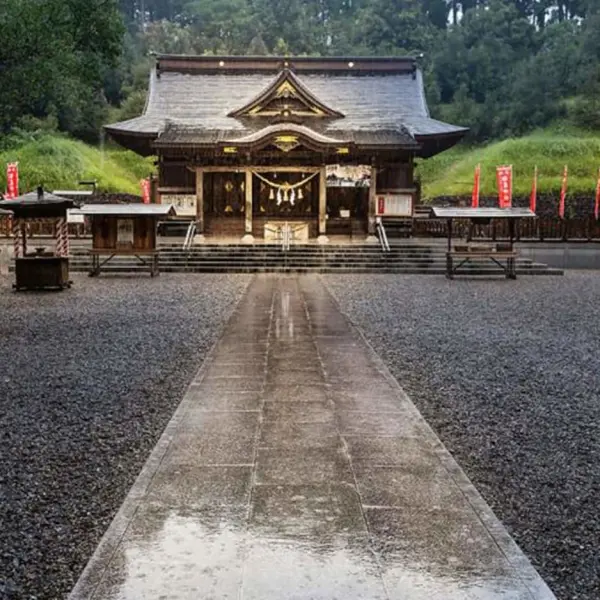 Road to Miyazaki
Road to Miyazaki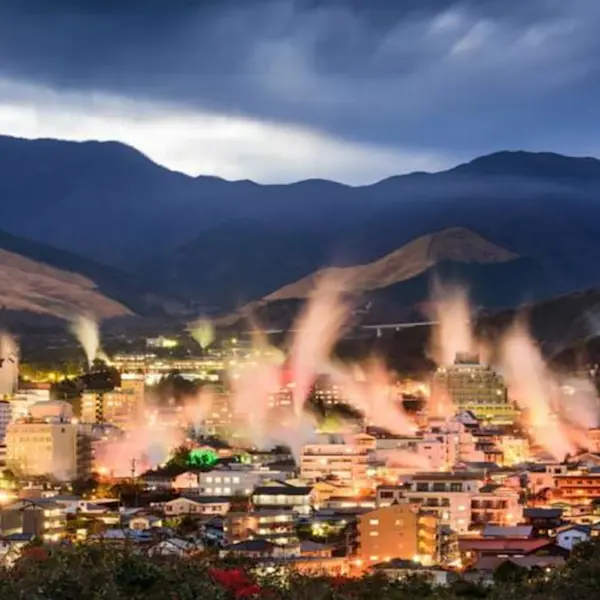 Beppu: An onsen for every taste
Beppu: An onsen for every taste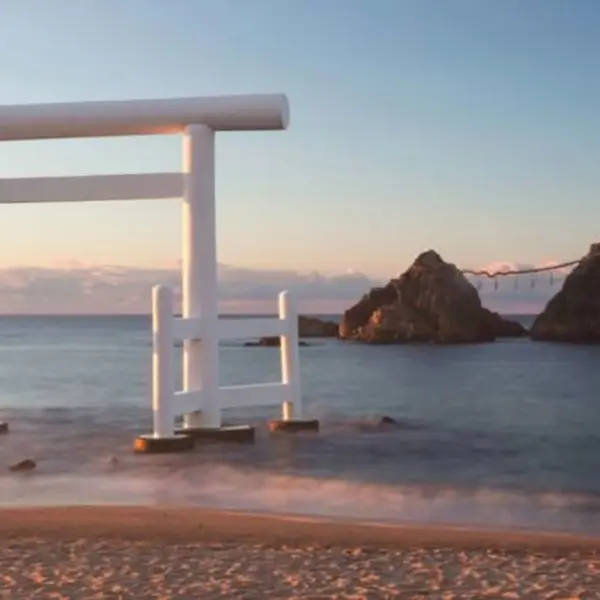 Slow down in Itoshima: Beach Cafés and Unforgettable Sunsets
Slow down in Itoshima: Beach Cafés and Unforgettable Sunsets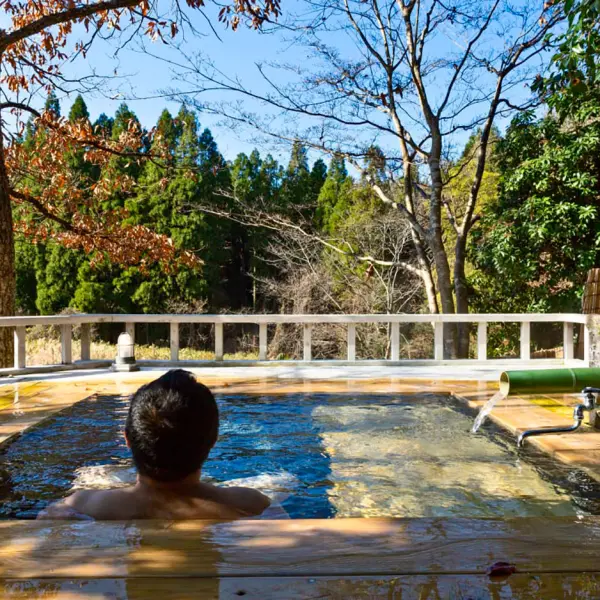 Waita Onsen Village - Spa-Hopping in Kumamoto’s Hot Spring Paradise
Waita Onsen Village - Spa-Hopping in Kumamoto’s Hot Spring Paradise Exploring Saga City and the Sake Street
Exploring Saga City and the Sake Street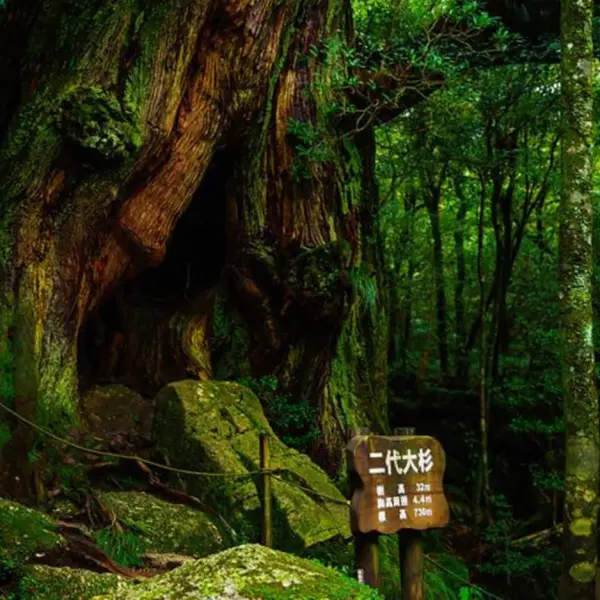 Yakushima: Island of Divinity
Yakushima: Island of Divinity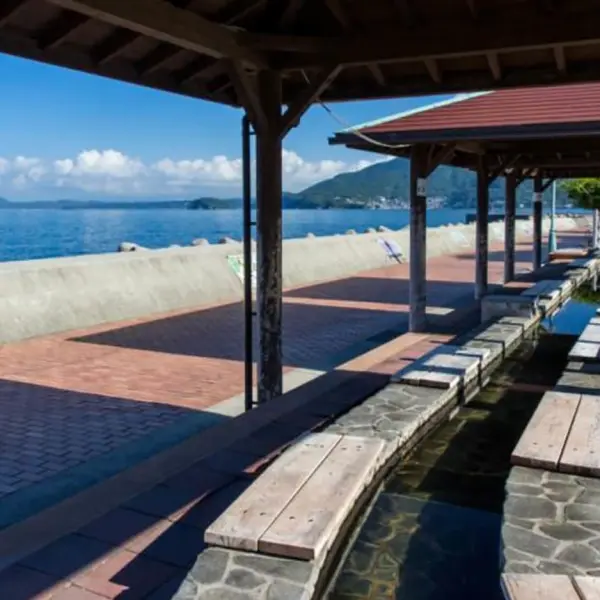 Obama Onsen: A Lovely Hot Spring Town by the Sea
Obama Onsen: A Lovely Hot Spring Town by the Sea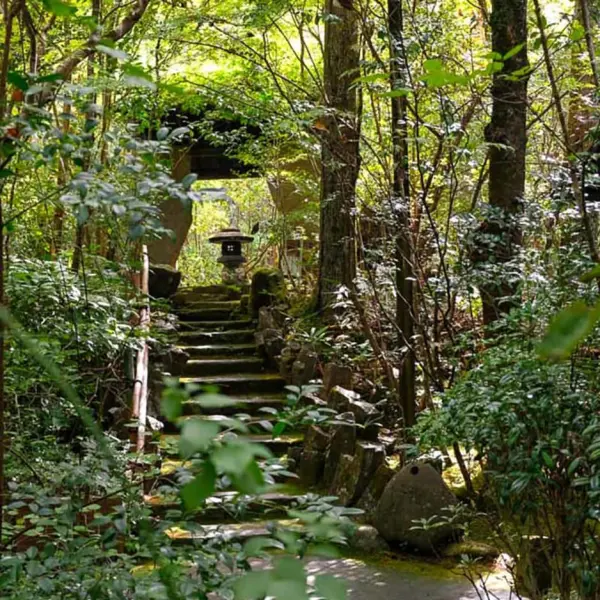 Sanso Tensui: A Luxury Onsen Retreat in the Forests of Oita
Sanso Tensui: A Luxury Onsen Retreat in the Forests of Oita Travel to Goto Islands in Nagasaki - Where Luxury and Convenience Awaits
Travel to Goto Islands in Nagasaki - Where Luxury and Convenience Awaits An onsen paradise – and culinary adventure – at Mount Aso
An onsen paradise – and culinary adventure – at Mount Aso




